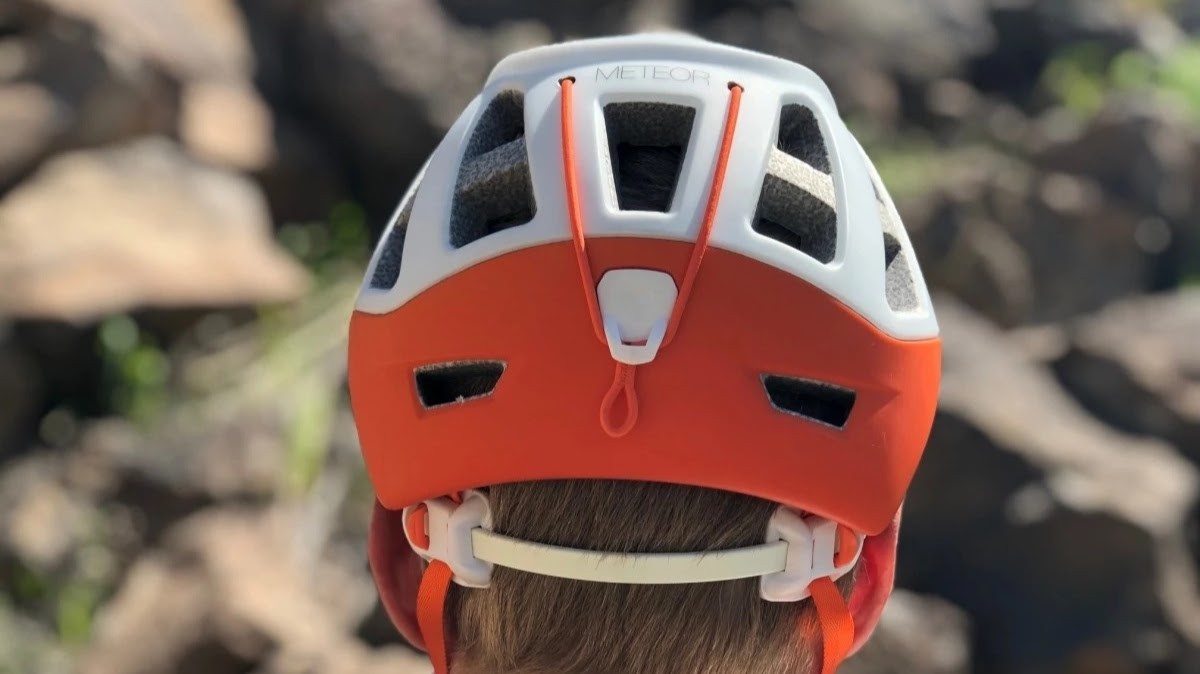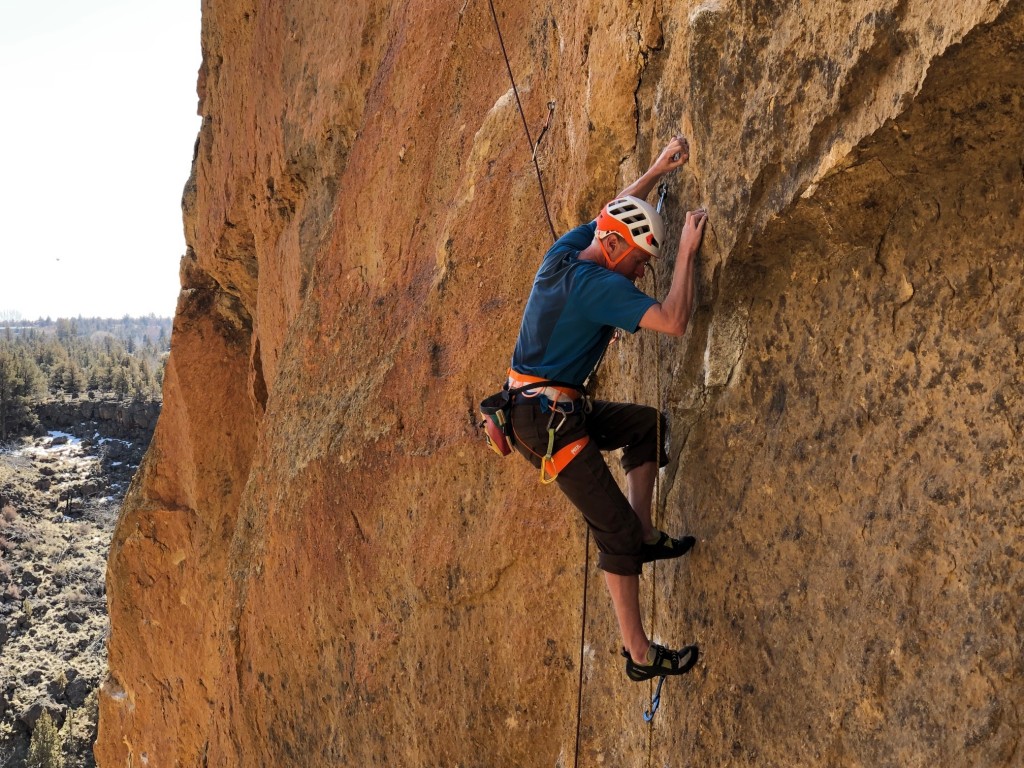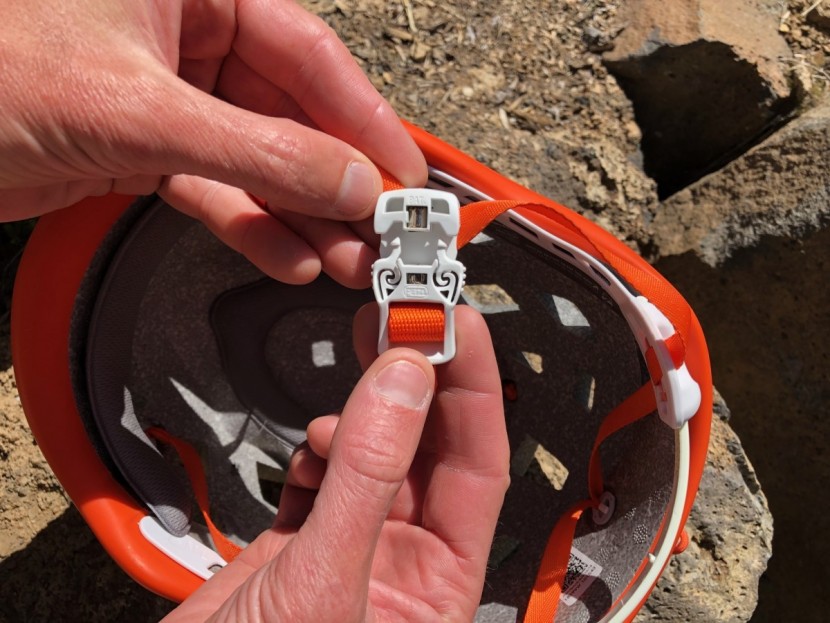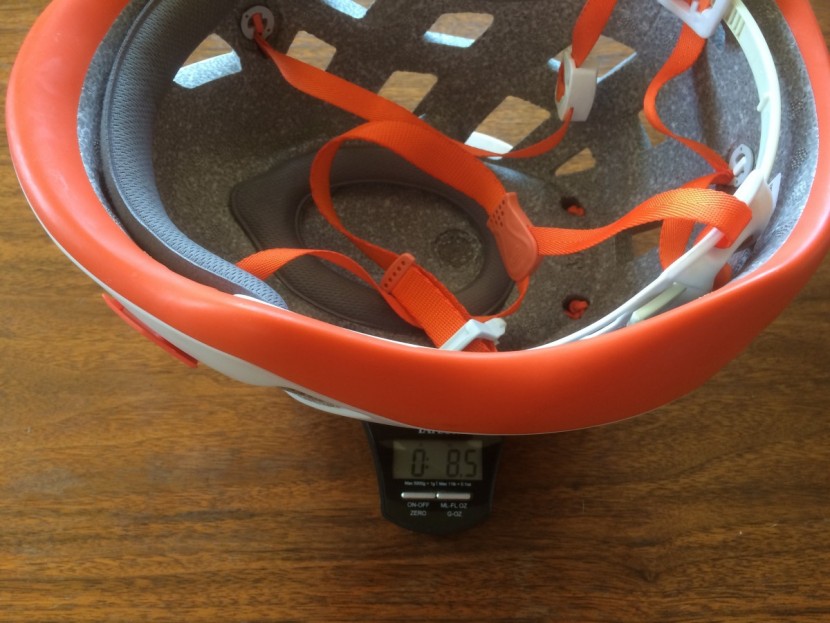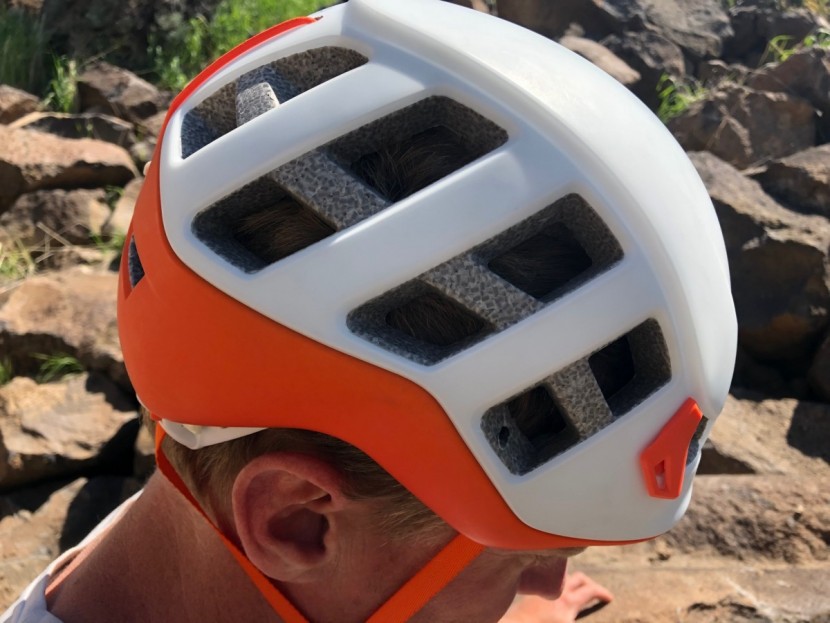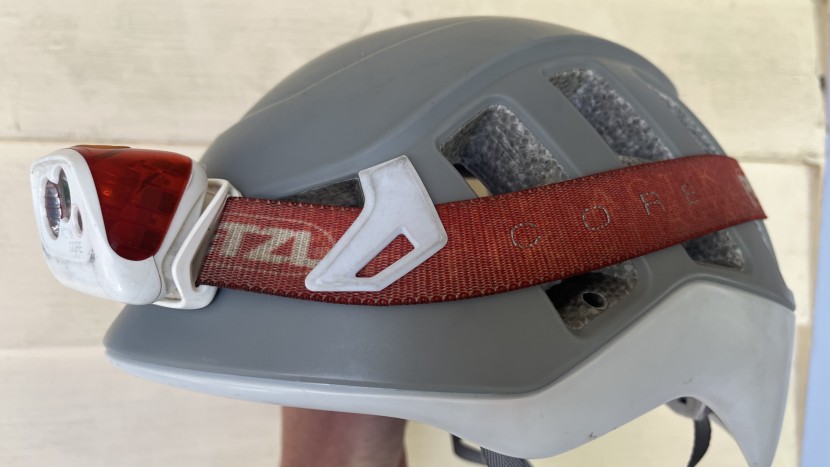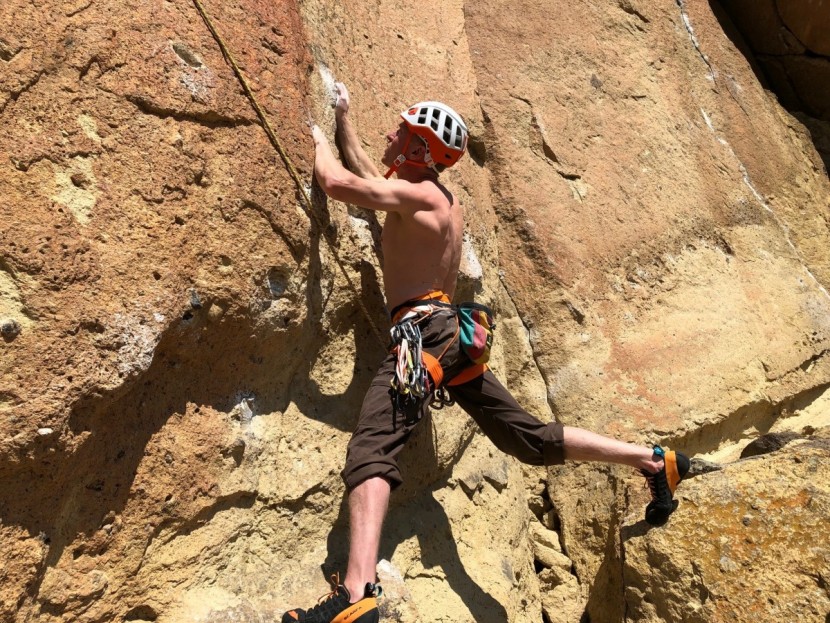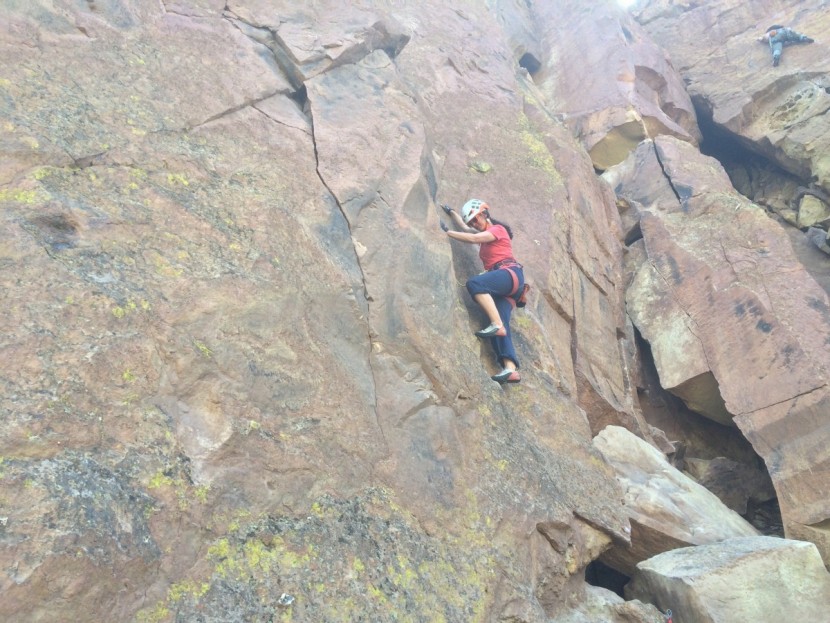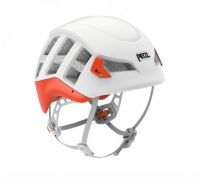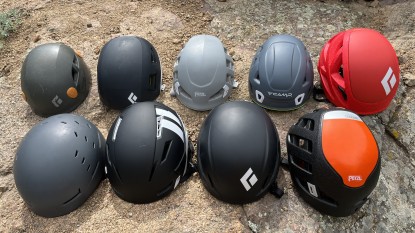Petzl Meteor Review


Our Verdict
Our Analysis and Test Results
The Petzl Meteor is less expensive than other high-performance options and weighs nearly as much as the lightest helmets on the market.
An Update to CE Standards
While the Meteor used to carry the CE certification for a ski mountaineering helmet (EN 18100), the protection standards were updated in 2024, and many helmets (including the Meteor) no longer meet those standards.
Comfort
The Meteor sits on top of the head, cushioned by a couple of soft pads, one on top and one across the front of the forehead. In the rear, the head is held in place by the adjustable plastic slider band, discussed more below. The helmet is deep and elongated, but we still felt some contact between our head and the inside of the helmet in places where there isn't padding, in particular in the back of the head.
There is no doubt that this is a comfortable helmet, but we have to get nitpicky to differentiate grading between all these great options. There are a couple of options that are slightly more comfortable.
Adjustability
This helmet is highly adjustable, thanks to a sliding plastic band across the back of the head. Adjustable sliders on each end of the band click into tiny notches as you push them together to tighten or slide apart to loosen as you depress the orange release buttons. This allows for a wide range of size options, and also makes the helmet useful for all kinds of weather and activities.
In addition to the rear adjustment, the V-yoke slings that go around the ears are easily adjustable. The chin strap tightens and loosens with ease. The chin strap clip uses a magnet to close, rather than a simple plastic buckle, and this magnet attracts metallic rocks and dust in certain geological areas. Over time, the build-up of dust and rock in the chin clip can inhibit the device from closing properly, which is annoying.
Weight
Our Large size Meteor weighed 8.5 ounces on our independent scale, easily placing it among the lightest in our test. This is especially impressive considering the degree of coverage the polycarbonate shell provides around the EPS foam. For the weight, this is one of the most protective and fully-featured helmets on the market.
While you may save a couple of ounces by choosing a helmet with a smaller shell, this helmet is relatively durable, lasting much longer than exposed EPP foam helmets. And even though weight savings can contribute to a more comfortable user experience, the Meteor is light enough that we couldn't feel the difference between this helmet and lighter options.
Ventilation
With 21 ventilation holes spread out over the helmet's front, sides, and rear, the Meteor is one of the most ventilated helmets you can choose.
In particular, there are two large and wide vents on the front of the helmet, a location that seems to have a greater bearing on how cool one feels while wearing it, as it allows wind or air to enter over the forehead and pass out the sides or rear of the helmet.
Features
We found the headlamp attachment system on this helmet to be one of the best. It features two low-profile orange clips with small teeth on the front that are relatively flexible and easy to slide a headlamp strap up underneath.
On the back of the helmet is a single, V-shaped elastic bungee held in place with a small hook that closes over the top of a headlamp strap. This setup is also designed to hold ski goggle straps in place.
Durability
This helmet uses a polycarbonate shell around EPS foam. While this shell protects the foam from critical damage, our experience with polycarbonate shells is that they tend to dent and crack over time. That said, the shell used on this helmet is thick and sturdy, and our test sample has shown no signs of weakness.
EPS foam can crack and break when absorbing the impact from a blow, so be sure to carefully check your helmet if something happens to it and retire it after sustaining a significant impact. While this helmet seems resilient, we still treated our testing helmet carefully.
Should You Buy The Petzl Meteor?
This helmet is not cheap, but is right around the average price for a lighter-weight EPS foam helmet. Several other helmets in this review have a similar design and price. However, when compared side-by-side with its direct competition, the Meteor is the most versatile based on performance, weight, and certification.
What Other Climbing Helmets Should You Consider?
If you are looking for the lightest helmet out there, the Petzl Sirocco is our favorite, and the ultra-lightweight Black Diamond Vapor is also a great choice. Our favorite all-around climbing helmet is the Black Diamond Vision Mips, which includes a super-protective Mips system in a lightweight package. If you are enticed by the low price of the Meteor and don't care that much about other performance attributes, the Black Diamond Capitan is our favorite helmet for climbers on a budget. And if you are looking for a climbing helmet also rated for downhill skiing, the Smith Summit Mips carries certifications in both disciplines.
| Awards | Best Value for a Lightweight Helmet |
|---|---|
| Price | $115 List Check Price at REI |
Overall Score  |
|
| Star Rating | |
| Bottom Line | A great helmet at an unbeatable value, it strikes a balance between low weight and durability |
| Pros | Lightweight, adjustable, durable, inexpensive |
| Cons | Magnetic buckle collects dirt |
| Rating Categories | Petzl Meteor |
| Comfort (30%) | |
| Adjustability (20%) | |
| Weight (20%) | |
| Ventilation (10%) | |
| Features (10%) | |
| Durability (10%) | |
| Specifications | Petzl Meteor |
| Measured Weight (Size Medium or M/L) | 8.5 oz |
| Shell Style | EPS, Polycarbonate |
| Certifications | EN 12492, UIAA |

